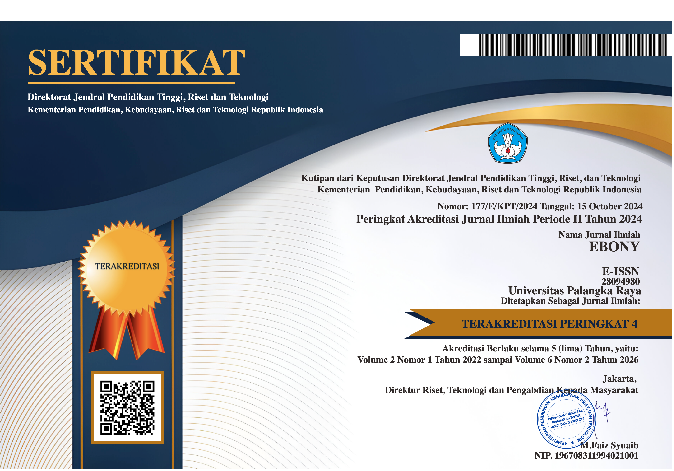The Effect of Teaching Reading Aloud Technique in Improving English Pronunciation
DOI:
https://doi.org/10.37304/ebony.v2i1.4041Keywords:
reading aloud, English pronunciation, technique of English teachingAbstract
Pronunciation is one of the essential components in oral form and is considered the basic ability of speaking English as well as other languages that has to be learnt by the students. Pronunciation is the production of sounds that is used for making meaning. The correct pronunciation of English is very important because the target of learning English is to help students to speak accurately and fluently which leads them easy to understand the utterances and to produce intelligible sounds. Reading aloud is an activity to read something loudly. By reading aloud, students can test themselves whether the pronunciations that they are saying is correct or not. This research was conducted to know the effect of teaching reading aloud technique in improving English Pronunciation. This research used “One Group Pretest and Posttest Design”. The sample of this research was the ninth-grade students by taking 31 students (13 male and 18 female). The result showed that the calculation of Wilcoxon Signed-Rank Test was 0.000. Since 0.000 < 0.05 even <0.001, the null hypothesis was rejected. In other words, there is a significant effect on students’ pronunciation of English by teaching using reading aloud technique.
Downloads
References
Bakker, A. (1982). English language -- Study and teaching -- Foreign speakers. Cambridge, UK: Cambridge University Press.
Celce-Murcia, M. (2001). Teaching English as a Second or foreign Language. 3rd Edition, Heinle & Heinle Publisher, Boston.
Djiwandono, M. S. (2008). Tes Bahasa: Pegangan bagi Para Pengajar Bahasa Malang: PT Macanan Jaya Cemerlang.
Doddy, A. (2008). Developing English Competencies for senior school (SMA/MA). Jakarta : Pusat Perbukuan.
Fauzi, I. (2018). The Effectiveness of Skimming and Scanning Strategies In Improving Comprehension and Reading Speed Rates for the Students of English Study Program. Register Journal-Vol. 11, No. 1, pp. 101-120.
Gibson, S. (2008). Reading aloud: a useful learning tool?. ELT Journal-Vol. 62, No. 1.
Goodwin. (2001). Teaching Pronunciation. Printed in The United States of America
Huang, L & Radant, J. (2009). Chinese Phonotactic Pattern and The Pronunciation Difficulties of Mandarin-Speaking EFL Learners.
Huang, L. (2010). Reading Aloud in The Foreign Language Teaching. Journal of Asian Social Science-Vol. 6, No. 4. China: English Department, Zhenjiang Watercraft College.
Lundy. (2004). English Autumn from the British Council. A Survey of What Makes Students Want to Read in Middle School Classrooms. Reading Research Quarterly, 36, 350-377.
Nuttal, C. (1982). Teaching reading skills in a foreign language. Oxford: Heinemann publishers.
Purwanto, M. V. (2008). Prinsip-prinsip dan Tehnik Evaluasi Pengajaran. Remaja Rosdakarya. Bandung.
Souhila, Rouai. (2014). The Use of Reading Strategies in Improving Reading Comprehension. Algeria: University Kasdi Merbah.
Downloads
Published
How to Cite
Issue
Section
License

This work is licensed under a Creative Commons Attribution-NonCommercial 4.0 International License.











